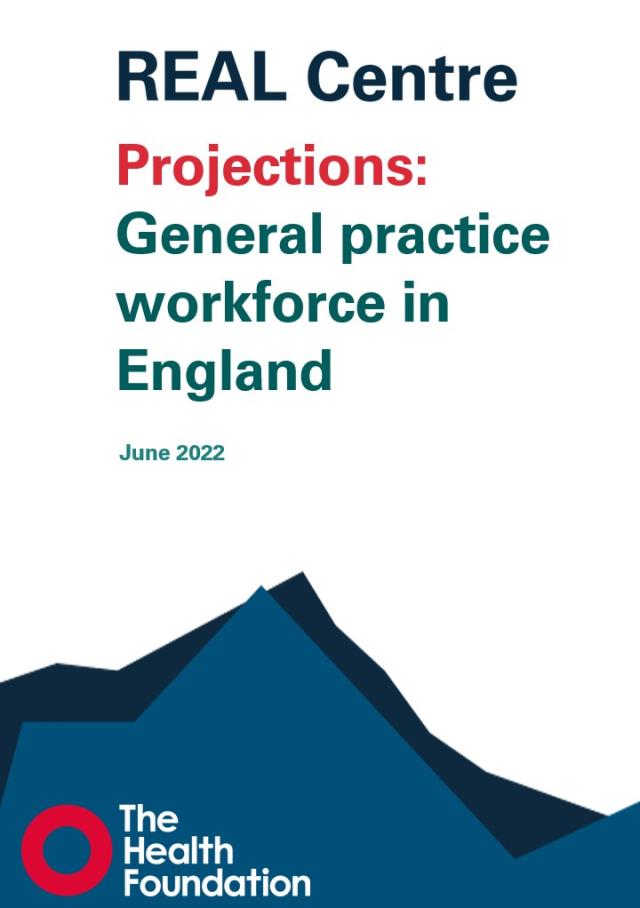Projections: General practice workforce in England
June 2022

Key points
- We summarise key findings of our analysis on workforce supply and demand in general practice in England up to 2030/31, focusing on patient care staff (GPs, general practice nurses and other patient care staff).
- In all of the three scenarios we consider, the supply of GPs and general practice nurses is projected to fall short of demand. Under current policy, the NHS faces a shortfall of close to 1 in 4 GP and general practice nurse posts by 2030/31. In our pessimistic scenario this increases to around 1 in 2 GP and nurse posts, raising concerns about patient safety, quality of care and equity of access.
- In our optimistic scenario the GP shortfall can be substantially mitigated by 2030/31, but this calls for sustained and concerted policy action to boost GP retention and integrate newer roles within multidisciplinary practice teams. Policy choices around training, funding and equity in general practice also have a vital role to play in addressing workforce pressures over the medium term.
Workforce shortages represented the single biggest challenge facing the NHS in England well before COVID-19. General practice has consistently faced workforce pressures that are likely to have been exacerbated by the pandemic.
This work presents analysis of long-term workforce supply and demand in the NHS in England to 2030/31, focusing on patient care staff in general practice (GPs, general practice nurses and other patient care staff). This analysis has been produced as part of the REAL Centre’s substantive upcoming report on NHS workforce projections.
Here, we present a brief summary of how policy choices might affect the recruitment and retention of these staff under alternative scenarios. Our analysis highlights that in the short term, across all scenarios, the existing GP supply-demand gap is projected to worsen over time. It suggests that there was a shortage of around 4,200 fully qualified, permanently employed FTE GPs in 2021/22. In the ‘current policy’ scenario, this shortfall is projected to increase to around 8,800 FTE by 2030/31.
In our ‘pessimistic’ scenario, the GP shortfall is projected to increase to around 18,900 FTE by 2030/31. This reflects persistent increases in GP workloads translating into rising GP leaver rates. It also assumes that newer patient care roles are inadequately integrated in general practice, exacerbating workload pressures on GPs and practice nurses. In contrast, in our ‘optimistic’ scenario, the GP shortfall in 2030/31 stands at around 1,200 FTE. This reflects sustained and effective policy action to improve GP retention rates and successfully integrate newer roles in practice teams.
We argue that addressing general practice workforce shortages urgently requires a comprehensive long-term and fully funded workforce strategy and acknowledgement that improvement will take many years. Further, our projections imply that ‘top down’ targets are unlikely to be effective in addressing workforce shortfalls. Policymakers need to account for geographic and sector variation in workforce supply and demand.
Note: The first version of this report, published on 30 June 2022, contained an error affecting the GP projections. This has now been corrected, and an updated version was published on 27 July 2022.
Download the slidedeck
Further reading
Work with us
We look for talented and passionate individuals as everyone at the Health Foundation has an important role to play.
View current vacanciesThe Q community
Q is an initiative connecting people with improvement expertise across the UK.
Find out more

